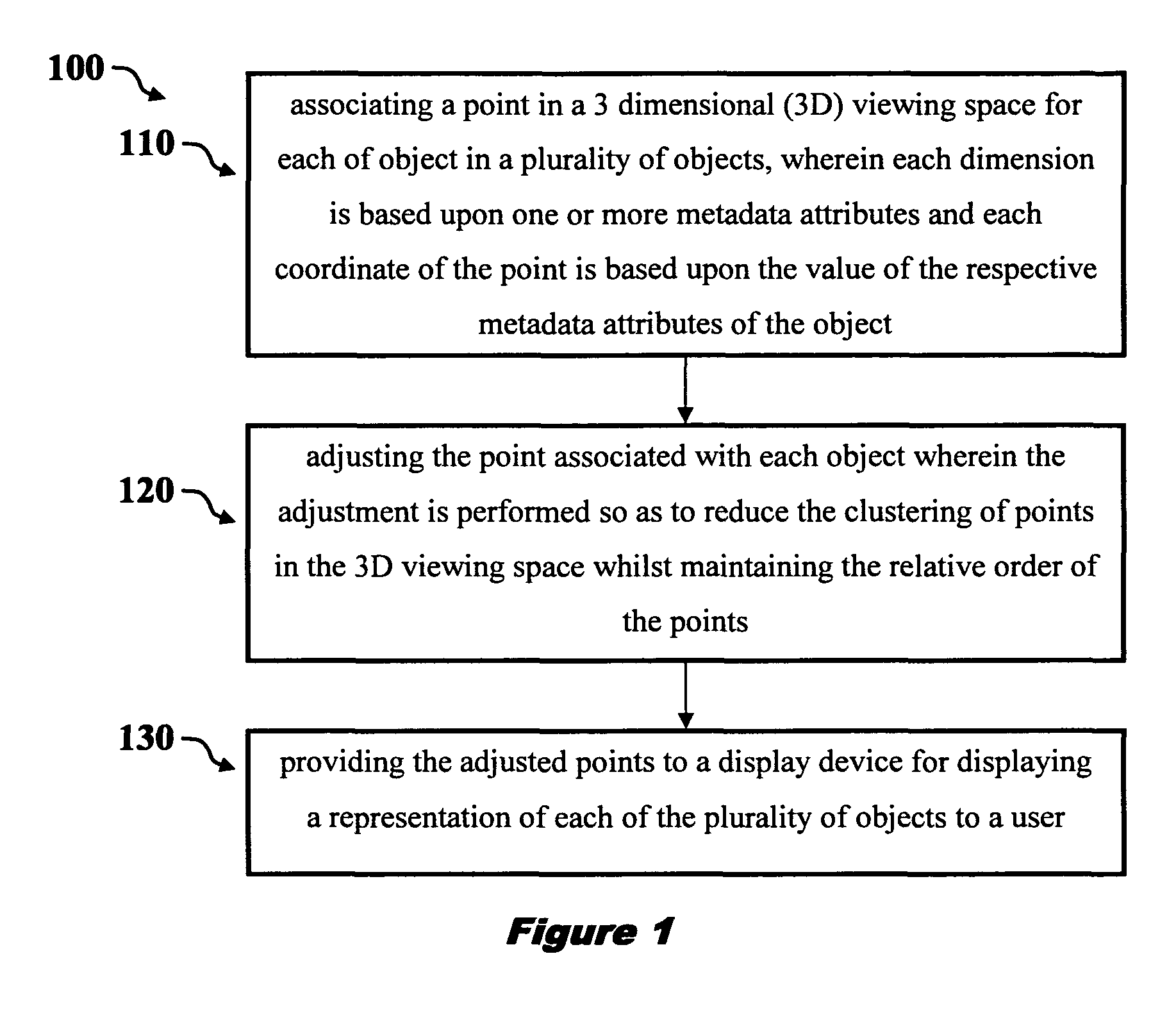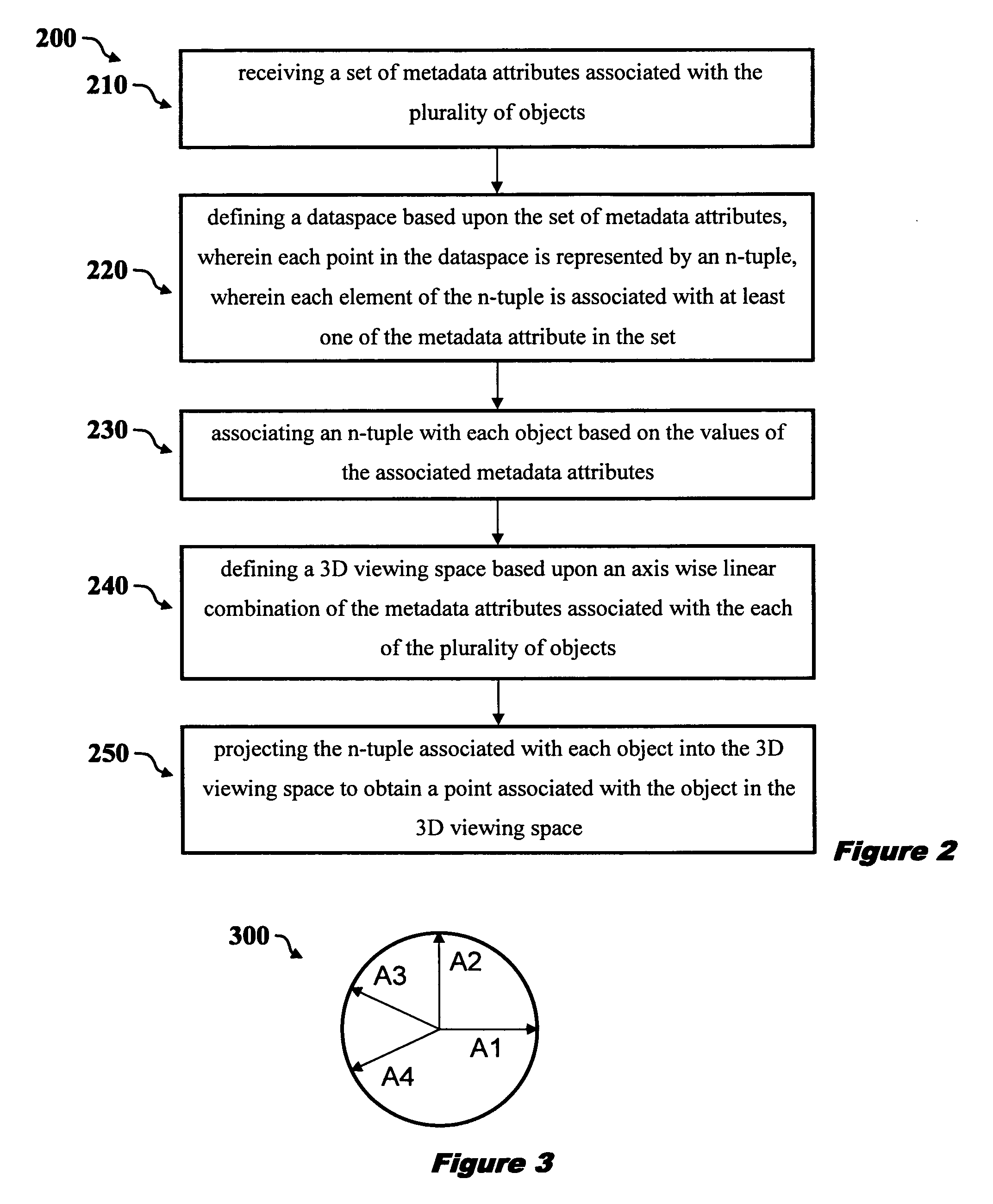Method and system for display of objects in 3D
a technology of objects and 3d, applied in the field of display of objects in three dimensions, can solve the problems of only usable approaches, insufficient to allow, and miss potentially relevant ones
- Summary
- Abstract
- Description
- Claims
- Application Information
AI Technical Summary
Benefits of technology
Problems solved by technology
Method used
Image
Examples
Embodiment Construction
[0092]Referring now to FIG. 1, there is shown a method 100 for displaying a plurality of objects in a three dimensional (3D) viewing space on a display device according to an embodiment of the invention. The method can be used to effectively and efficiently display visual representations of each object (such as images or icons) in a 3D viewing space based on metadata attributes or properties. The points in the 3D space are adjusted in a way that preserves the structural relationship between the objects whilst optimising the viewing volume. This allows a user to visualise and navigate the collection or set of objects and rapidly identify an object, or objects of interest.
[0093]The method includes the first step 110 of associating a point in a 3 dimensional (3D) viewing space (or world space) for each of the plurality of objects to be displayed (the collection of objects). Each of the objects has a plurality of metadata attributes associated with the object and each of the dimensions ...
PUM
 Login to View More
Login to View More Abstract
Description
Claims
Application Information
 Login to View More
Login to View More - R&D
- Intellectual Property
- Life Sciences
- Materials
- Tech Scout
- Unparalleled Data Quality
- Higher Quality Content
- 60% Fewer Hallucinations
Browse by: Latest US Patents, China's latest patents, Technical Efficacy Thesaurus, Application Domain, Technology Topic, Popular Technical Reports.
© 2025 PatSnap. All rights reserved.Legal|Privacy policy|Modern Slavery Act Transparency Statement|Sitemap|About US| Contact US: help@patsnap.com



